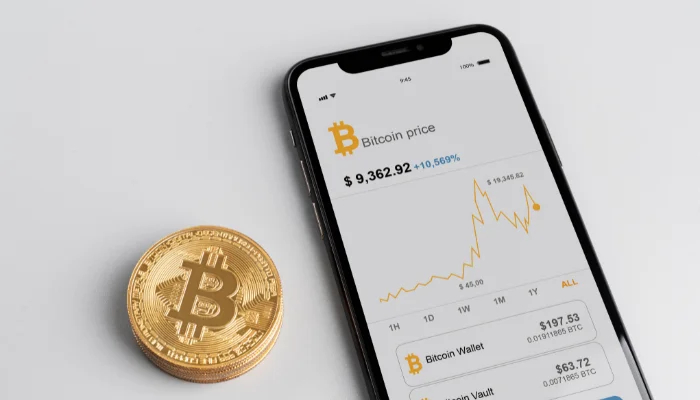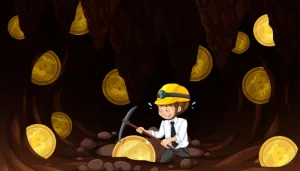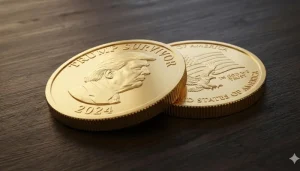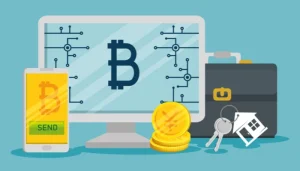It’s 2:47 a.m. You’re half-awake, staring at the glow of your trading app. Bitcoin just moved 3% while you were brushing your teeth. Somewhere in the world, someone’s making or losing a small fortune.
And you catch yourself wondering: Wait, does the crypto market ever actually close?
If you’re coming from the world of stocks or forex, that question makes total sense. Traditional markets sleep. They open with the ring of a bell and close with a sigh. But crypto? Crypto doesn’t ring bells. It doesn’t sleep. It hums quietly, day and night, across time zones and hemispheres.
At Fillyx, we spend a lot of time watching this global rhythm, the endless pulse of digital money, and trying to make sense of what “market hours” even mean in a world without a clock.
So, let’s talk about it.
Before reading further, check out our article why is crypto crashing and will it recover
Understanding How the Crypto Market Works
One of the first things you realize about crypto is that it doesn’t belong to anyone. There’s no “headquarters,” no central exchange floor with shouting brokers. It’s this vast, decentralized network of computers scattered all over the planet, verifying transactions and moving assets through code instead of paperwork.
That’s why it never really closes. There’s no gate to lock.
Sure, individual crypto exchanges, the platforms where you actually buy and sell, like Binance, Coinbase, or Kraken, might go down for maintenance. Sometimes they’ll pause withdrawals, tweak liquidity systems, or perform updates. But that’s like a pit stop in a race that never ends. The blockchain itself, the underlying network that keeps everything alive—keeps running while the pit crew works.
Unlike the New York Stock Exchange (NYSE) or NASDAQ, which open and close based on U.S. business hours, the crypto market operates on global time. When the U.S. winds down for the night, Asia wakes up. When Asia logs off, Europe kicks in. And the chain keeps moving, minute by minute, block by block.
That’s the magic and the madness of it.
So… Does Crypto Market Close?
No, It never closes, but it does take naps.
There’s this funny misconception floating around, especially among new traders in the U.S., that maybe the crypto market “closes” at some point, like on weekends or holidays. Nope. You can trade Bitcoin on Christmas morning if you really want to (though I’d argue you deserve a break).
Crypto is 24/7/365.
That said, the activity within the market ebbs and flows like tides. Not because the market is asleep, but because we are. Different regions wake up and start trading at different times, which changes liquidity, volatility, and momentum.
In a sense, crypto has time zones, not hours.
Crypto Market Opening Time in the USA and Other Regions
Let’s take a quick world tour.
United States: The Afternoon Hustle (EST/PST)
When New York and Chicago traders log on, the market gets louder. Big institutional players, Wall Street-adjacent funds, and high-frequency trading bots start flexing. It’s usually between 8:00 a.m. and 4:00 p.m. EST when U.S. trading activity peaks.
During these hours, liquidity is high, and prices can swing sharply based on macroeconomic news, interest rate updates, or even an Elon Musk tweet (we’ve all seen it).
Europe: The Crossover Zone
Then there’s Europe, London, Frankfurt, and Zurich, the steady bridge between the U.S. and Asia. The European session often overlaps with both, creating one of the most active trading windows of the day.
This overlap, from roughly 7:00 a.m. to 11:00 a.m. EST, is prime time. It’s when you’ll see some of the most volatile price action and volume surges.
Asia: The Midnight Surge
Here’s where things get interesting. When most U.S. traders are winding down, Asia wakes up. Markets in Singapore, Hong Kong, and Japan begin their day, bringing a wave of fresh volume.
This “Asian session” can often set the tone for the next day’s market mood. Sometimes, you’ll go to bed with Bitcoin at $68K and wake up to $70K because Japan and Korea decided to go bullish overnight.
Crypto doesn’t close, but it does rotate.
Does crypto market close on weekends?
Nope. Saturday and Sunday look just like any other day on the blockchain. But they feel different.
Weekends tend to have lower liquidity, fewer big institutional trades, fewer whales moving capital. What that means is that even small buy or sell orders can move the market more dramatically. You’ll often see sharper spikes, faster drops, and generally thinner order books.
It’s like driving on an empty highway, fewer cars, but if one swerves, everyone feels it.
Some traders love weekend volatility. Others avoid it completely. Either way, it’s important to remember that crypto doesn’t take a break just because your bank does.
When the Market Gets Quiet
Even though the crypto market is always open, it’s not always awake.
There are slow hours, those odd in-between moments when neither Asia nor the U.S. is particularly active. Think early afternoon in Europe, or late-night U.S. time before Asia fully comes online.
Trading volume drops, and the charts start to look sleepy. These quiet stretches can be deceptive, they lull you into thinking nothing’s happening until suddenly, a liquidity spike hits and prices jolt awake.
At Fillyx, we’ve noticed an interesting pattern in our data: some of the biggest intraday breakouts often start brewing during these low-volume periods. It’s as if the market catches its breath right before it sprints.
How Market Hours Affect Crypto Price Movements?
Here’s a strange truth: crypto behaves differently depending on who’s awake.
During Asian hours, trading tends to be driven more by technicals and local exchange flow, momentum and pattern-based moves. The European session often brings measured, institutional trades and larger Bitcoin-Ethereum pair rotations. And once the U.S. wakes up, all hell can break loose with sudden news catalysts, ETF updates, or macroeconomic headlines.
If you’ve ever wondered why crypto sometimes “goes down at night,” it’s not because the moon phases are to blame (though crypto Twitter would love that theory). It’s simply a liquidity thing, fewer traders, less resistance, sharper moves.
And yet, some of the most profitable trades are born in these quieter hours. Low volume can mean opportunity for the patient.
The 24/7 Double-Edged Sword
A 24/7 market sounds thrilling until you realize what it does to your brain.
Unlike stock traders, crypto traders don’t get weekends or market closes to decompress. There’s always another candle forming, another notification pinging. I’ve seen people obsessively refresh price charts during dinner dates. (Yes, I’ve been that person.)
It’s intoxicating, and exhausting.
That’s why smart traders set boundaries. They use stop-losses, limit orders, and automated tools to protect themselves when they’re not staring at the screen. They plan trades around global overlaps, the periods when multiple regions are active and volume is highest.
The truth is, you can’t outlast the market. It’ll keep going whether you’re watching or not. The real skill lies in learning when to step back.
What About Exchange Downtime?
Here’s the only real “closing time” you’ll ever see in crypto: exchange maintenance.
Major exchanges occasionally schedule short downtimes to update their systems or perform security checks. Binance, for instance, might pause spot trading for a couple of hours, or Coinbase might go into maintenance mode during low-traffic windows.
These are usually announced in advance and don’t affect the underlying blockchain, just your ability to trade temporarily.
Think of it like your favorite coffee shop closing early for a deep clean. The beans still exist, you just can’t get your latte for a while.
Regional Market Waves: A Trader’s Perspective
If you’re an active trader, you’ll start to notice certain rhythms repeating themselves:
- Asian Mornings (GMT+8): Fast, speculative moves, altcoins tend to wake up here.
- European Midday (GMT+0): Volume builds, direction starts to form.
- U.S. Open (EST): Momentum spikes, especially on major pairs like BTC/USDT and ETH/USD.
These cycles create mini “sessions” in a market that technically never closes. Understanding them can help you time entries and exits with a lot more precision.
At Fillyx, we often tell our community this: Don’t just trade prices, trade the rhythm.
The Curious Calm of Midnight
There’s something oddly poetic about watching the crypto market at 3 a.m. It’s quiet, almost meditative. The noise dies down, the price ticks slower, and you realize you’re part of this global current, millions of people across continents, staring at the same chart, each chasing something slightly different.
It’s both intimate and infinite.
And that’s the strange beauty of crypto: it mirrors the internet’s energy. Always on, always alive, a little chaotic, and endlessly human.
Trading Smart in a Market That Never Sleeps
So how do you stay sane in a market that doesn’t stop?
A few hard-earned lessons:
- Automate what you can. Set alerts, bots, and stop-losses so you can sleep without fear.
- Respect time zones. Now when Asia, Europe, and the U.S. overlap, it’s where most movement happens.
- Keep perspective. Just because the market’s open doesn’t mean you have to be.
- Use the data. Tools like Fillyx give you real-time metrics, heat maps, and insights that help you see global trends before they explode.
The best traders I know treat crypto like surfing. You can’t control the ocean, you just learn to read the waves and know when to paddle out, and when to let them roll past.
Conclusion
So, when does crypto market close?
It doesn’t. It just keeps breathing – steady, unpredictable, and somehow alive.
And maybe that’s what makes it so compelling. It reflects us: restless, connected, always chasing the next move.
At Fillyx, we like to say the crypto market is less like a clock and more like a tide. It rises and falls, but it never stops.
So wherever you are, whenever you trade, just remember: the market’s awake. The question is, are you?
FAQs
Does the cryptocurrency market ever close?
Nope. It’s open all day, every day. Only individual exchanges might pause for brief maintenance windows.
What time does crypto market close in the U.S.?
It doesn’t. But the most active trading hours in the U.S. are roughly 8:00 a.m. to 4:00 p.m. EST, when institutional money moves.
Does crypto go down at night?
Sometimes. Prices can drift lower during low-volume hours, especially when U.S. traders log off and Asian sessions haven’t ramped up yet.
Can I really make $100 a day trading crypto?
Maybe, but it’s not guaranteed, and it’s not easy. It depends on capital, strategy, and risk management. Remember: volatility cuts both ways. Trade smart, not fast.






